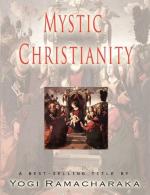Dr. James Beattie has written, “Though mankind have at all times had a persuasion of the immortality of the soul, the resurrection of the body was a doctrine peculiar to early Christianity.” S.T. Coleridge has written, “Some of the most influential of the early Christian writers were materialists, holding the soul to be material—corporeal. It appears that in those days some few held the soul to be incorporeal, according to the views of Plato and others, but that the orthodox Christian divines looked upon this as an impious, unscriptural opinion. Justin Martyr argued against the Platonic nature of the soul. And even some latter-day writers have not hesitated to express their views on the subject, agreeing with the earlier orthodox brethren. For instance, Dr. R.S. Candlish has said,
“You live again in the body,—in the very body, as to all essential properties, and to all practical intents and purposes, in which you live now. I am not to live as a ghost, a spectre, a spirit, I am to live then as I live now, in the body.”
The reason that the early Church laid so much stress on this doctrine of the Resurrection of the Body, was because an inner sect, the Gnostics, held to the contrary, and the partisan spirit of the majority swung them to the other extreme, until they utterly denied any other idea, and insisted upon the resurrection and re-vitalizing of the physical body. But, in spite of the official fostering of this crude theory, it gradually sank into actual insignificance, although its shadow still persists in creed and word. Its spirit has retreated and passed away before the advancing idea of the Immortality of the Soul which returned again and again to Christianity until it won the victory. And as Prof. Nathaniel Schmidt has said, in his article on the subject in a leading encyclopaedia, “... The doctrine of the natural immortality of the human soul became so important a part of Christian thought that the resurrection naturally lost its vital significance, and it has practically held no place in the great systems of philosophy elaborated by the Christian thinkers in modern times.” And, yet, the Church continues to repeat the now meaningless words, “I believe in the Resurrection of the Body.” And while practically no one now believes it, still the recital of the words, and the statement of one’s belief in them, forms a necessary requisite for admission into the Christian Church to-day. Such is the persistent hold of dead forms, and thoughts, upon living people.
And, so you can readily see from what has been said, why the early Christians, about the close of the first century A.D., attached so much importance to the physical conception and birth of Jesus. To them the physical body of Jesus was Jesus Himself. The rest follows naturally, including the Virgin Birth and the Physical Resurrection. We trust that you now understand this part of the subject.




